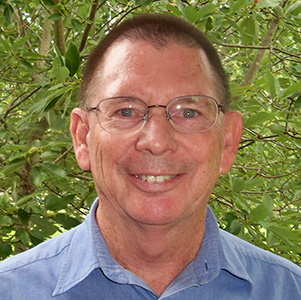The Point: We intersect daily with people who need Christ.
The Healing of the Lame Man: Acts 3:1-10.
[1] Now Peter and John were going up to the temple at the hour of prayer, the ninth hour. [2] And a man lame from birth was being carried, whom they laid daily at the gate of the temple that is called the Beautiful Gate to ask alms of those entering the temple. [3] Seeing Peter and John about to go into the temple, he asked to receive alms. [4] And Peter directed his gaze at him, as did John, and said, “Look at us.” [5] And he fixed his attention on them, expecting to receive something from them. [6] But Peter said, “I have no silver and gold, but what I do have I give to you. In the name of Jesus Christ of Nazareth, rise up and walk!” [7] And he took him by the right hand and raised him up, and immediately his feet and ankles were made strong. [8] And leaping up he stood and began to walk, and entered the temple with them, walking and leaping and praising God. [9] And all the people saw him walking and praising God, [10] and recognized him as the one who sat at the Beautiful Gate of the temple, asking for alms. And they were filled with wonder and amazement at what had happened to him. [ESV]
“Jumping for Joy! [1-10]. This passage draws attention to the zeal, vitality, joy, and Christ-focused nature of these early Christians. It is immediately obvious that these early Christians were fascinated with Jesus – who He was and what He had done. Their message was more than just a philosophical system or a grand ethical scheme. In essence, it was the person and work of Jesus Christ. They had come into fellowship with Jesus Christ and, as a consequence, experienced the forgiveness of sins [Acts 2:38]. In Jesus Christ, they had found joy [2:46]. He was a man attested to you by God with mighty works and wonders and signs that God did through him [2:22]. They crucified Him [2:23], but God raised Him from the dead [2:24,32] and declared Him both Lord and Christ [2:36]. And here, in the temple, Peter offers Jesus to a needy soul: I have no silver and gold, but what I do have I give to you. In the name of Jesus Christ of Nazareth, rise up and walk! [3:6]. It was because they understood Jesus to be the fulfillment of Old Testament prophecy that the first Christians did not, initially at least, see the need to cut themselves off from Jewish worship. In a very important sense, these early Christians saw themselves as still Jewish – authentically Jewish, having come to understand what the Old Testament Scriptures had been all about from the very beginning. They still attended the temple and synagogue services. They did not abandon altogether the institutions of worship with which they were accustomed, and the passage before us shows how they attended the prayer services of the temple [2:1,15; 3:1; 10:3,9,30]. While in all likelihood Peter and John did engage in prayer at the temple, there is no evidence that they attended the sacrificial ceremonies of the temple. These, they had come to understand, were abrogated by the death of Jesus Christ on Calvary. To suggest otherwise would seriously question whether or not the disciples had come to understand the finality of the death of Jesus Christ as a sacrifice for sinners.
The Storm Breaks. The idyllic portrait that Luke had painted at the close of chapter 2 was the proverbial calm before the storm. Jesus had warned them clearly enough that in the world you will have tribulation [John 16:33], adding in the Olivet Discourse that tribulation is a distinguishing feature of the period between the two advents [Matt. 24:9,21,29]. In chapter 4, Peter and John will be thrown into prison for a night – the first sign that their Christian faith will be tested to the limit. The enormous Temple Mount of Herod had a 45-foot-wide colonnade around it. The eastern colonnade was called Solomon’s Colonnade and was used by Jesus and the early Christians as a place of meeting and teaching. At three in the afternoon they gathered for prayer. Many hundreds of people gathered in the outer sections of the temple. We have no indication how much time had elapsed since Pentecost. Just as the apostles arrived, a crippled man appeared, carried by others to one of the entrance gates in the temple area. More than likely, relatives and friends did this. It would not have been an unusual sight. Due to the lack of modern medical care, worshipers at the temple saw such things on a daily basis. Deformity was a serious ailment in Israel. Forty years old, the cripple was a social outcast because of his congenital deformity, unable to enter the parts of the sanctuary to which this Beautiful Gate promised entry. He had never walked in his entire life – but more especially, he had never walked beyond this gate into the nearer presence of God! Probably, ever since he was young, he had been utterly dependent on the kindness of others to bring him to the temple to beg. He and others like him were dependent on the generosity of the worshipers in the temple. It is easy to imagine him with a piece of clothing stretched out before him or a bowl of some kind with a few coins in it. He would cry out, “Alms for the poor!” It was a pitiful existence with little relief. The sheer monotony of his life is enough to elicit sympathy from the hardest heart. But this day was going to be different! Passing by him were two of the apostles, Peter and John, and what took place is nothing short of a divine miracle. The healing of the cripple was one of those events that Luke had already described as a wonder and sign [2:43]. Earlier, Luke had added another term in describing the miracles of Jesus: mighty work [2:22]. These three categories, mighty works and wonders and signs [2:22], encapsulate for us what these miracles are designed to show.
Wonders, Signs, and Mighty Acts. Miracles are a display of divine power. Miracles tell us something has occurred that cannot be explained by the normal course of science. The congenitally crippled do not suddenly get up and walk and leap about. Something extraordinary took place here, requiring the putting forth of power from outside. Miracles cannot happen by the agency of created power alone. They are indicative of the power of the Creator rather than the power of that which has been created. In commanding the crippled man to walk [3:6], Peter told him to do something that he lacked the power to do. Peter was commanding the impossible! But what is impossible with men is possible with God. The Lord of creation was at work here. As the lame man rose to his feet for the first time and then leapt into the air, nothing short of life-generating power was evident. The bones of his feet now came together. The sense of balance that he never really experienced came to him. He was able, in an instant, to exercise agility without the use of corrective surgery, which today may have accomplished the same thing, but over a longer period of time involving months of physiotherapy. Notice that Peter first asked the man to look at him [3:4]. Doubtless, this gained his complete attention, and it also ensured that the resultant miracle would be seen as something that, though not originating in Peter, nevertheless did not take place without Peter’s instrumentality. The miracle took place through Peter, indicating that Peter was pointing to something or to Someone else! This explains why he prefaced the miracle with the words: I have no silver and gold, but what I do have I give to you. In the name of Jesus Christ of Nazareth, rise up and walk! [3:6]. It pointed to Jesus Christ as its Author, not to Peter. Thus it was a sign of what Jesus had come into this world to do. Isaiah, in one of the most colorful descriptions in the Old Testament of what the Messiah would accomplish, spoke of a time when the eyes of the blind shall be opened, and the ears of the deaf unstopped; then shall the lame man leap like a deer, and the tongue of the mute sing for joy. For waters break forth in the wilderness, and streams in the desert [Isa. 35:5-6]. Isaiah’s prophecy is a picture of Eden restored to its pre-fallen beauty. The coming of Jesus Christ ushers in the beginning of a process that, following His return at the end of the age, will accomplish the complete fulfillment of this prophecy. The Spirit of God, poured out on the church at Pentecost, is a Spirit of restoration. Jesus, the last Adam, came to restore the world, from its current state of disintegration and sin, to its former state of beauty and glory. We do not yet see this done [Heb. 2:8]. Creation still groans and travails in labor pains, awaiting the dawning of that day in its fullness [Rom. 8:22-25]. But already we see the powers of the age to come let loose in the present age through the ministry of the apostles [Heb. 2:4; 2 Cor. 12:12]. The healing of this cripple is indicative – a sign – of what one day – that day [1 Thess. 5:4; 2 Thess. 1:10; 2:3] – will be manifested in all its splendor. The King of creation is at work! This man was to look to Jesus for his healing and give thanks to Him for it. Peter was the conduit through whom Jesus now, by the Spirit, poured forth His mercy. Equally, what happened filled those who witnessed it with wonder and amazement [3:10]. Miracles are not only mighty acts and signs; they are also wonders. They filled the onlookers with a sense of awe at the divine presence. They had the sense of the Holy One in their midst to which the proper response is one of awe. Four times in three verses, Luke describes the man as walking [3:6,8,9], as though contrasting his former state of paralysis: And leaping up he stood and began to walk, and entered the temple with them, walking and leaping and praising God. And all the people saw him walking and praising God [3:8-9]. We cannot draw from stories of this nature that similar miraculous healings are promised for our time, though God may choose to do something extraordinary at any time. What we can conclude is that miracles of this kind provide us with a glimpse of the world to come. They are signs of the re-created order of things. To those who experience disability in this world, there is the promise that in the world to come they will enjoy the liberty and blessing of a new body. In our resurrection bodies, every last trace of what sin has done to us will be gone forever.
Gospel Adumbrations. Why is Luke telling us this story? Are we meant to conclude, for example, that healing – the healing of physical ailments – is essential to the gospel? If that were indeed the case, we would need to ask a further question: why, then, did the apostles not engage in more healings? Why do we not see in Jesus’ time the entire Middle East rid of all disease and physical deformity as a sign of the coming of the Messiah? But that was not the case, nor was it the primary mission of Jesus Himself. Indeed, despite the fact that the apostles were given the gift of healing [1 Cor. 12:9,30], apparently they were not able to heal everyone, even those within the community of the faithful. No, healings were signs of the coming of the kingdom of God, as Isaiah 35 had so graphically indicated and as Jesus had confirmed to a doubting John the Baptist in prison [John 7:20-23]. Yet healings were not the Kingdom’s sole or even primary function. Sickness indicates a world that is out of joint. Sickness ought not be present in a world created by the power of God. The reason for sickness is sin – not that we can necessarily draw a direct line from a specific sin to a specific illness, but apart from sin in the world, there would be no sickness. God may heal us in this world, but the principle of death still operates – this cripple who leaped in the temple did eventually die! The world in which we live continues to groan in pangs of childbirth, waiting for the day when all things will be made new. Later, in his sermon explaining the healing of the crippled man, Peter will say this very thing: we do not hope in temporal healing, but in the eternal healing of Christ that will one day perfectly restore us in both body and soul [Acts 3:21]. Physical healing in this world is indicative of something more permanent – the healing of our souls and, secondarily, the healing of our risen bodies. Elements of this miracle indicate how Jesus forgives sin. He commands us to do something we are unable to do! Rise up and walk, Peter said. In some way these words must have sounded offensive. Rising and walking were precisely the things this man could not do. It is a picture of the gospel, of course. The gospel calls on us to repent and believe, but our hardened hearts are dead in trespasses and sins and unable to respond to these commands. Sickness is a picture of what sin has done: it has twisted and misshaped our lives, rendering us poor beggars trying to find some relief in a hostile world. These miracles – the ones performed in Jesus’ own ministry and those done by the apostles in His name – both authenticate Jesus as the Messiah and provide us a picture of what Jesus had come to do. When Jesus raised Lazarus from the dead, for example, He would use that miracle to illustrate that He is the resurrection and the life, and those who believe in Him will live and never die [John 11:25-26]. In other words, Jesus uses physical miracles to convey spiritual truth. In that case, physical death is a sign of spiritual death. Similarly, blindness and deafness can describe the noetic effects of sin – the effects of sin on our ability to know the truth and to hear the Word of God. In the same way, the healing of this cripple and the fact that he is found in the temple precincts, leaping and praising God, is meant to convey to us something more than just the ability of the apostles to cure physical ailments. In addition to being wonders and powers, miracles, in this case a healing miracle, are signs in that they point beyond themselves. There is an analogy between the healing of the body and the healing of soul. Healing miracles can reflect the way in which we need spiritual healing. The gospel finds sinners in a condition in which they are unable to respond to what is being asked of them. The gospel commands that we repent of our sins and trust in Christ alone for salvation. But the natural heart is unable to do this. Jesus clearly taught this inability: No one can come to me unless the Father who sent me draws him [John 6:44]. This lame man at the temple was commanded to rise up and walk, something he was clearly unable to do! Similarly, the gospel comes to us and commands us to turn from our sins and believe in Jesus Christ – something that we are equally unable to do in ourselves. In order to be able to do this, something radical must take place in which sinners are rendered able to do what they are naturally unable to do. With Peter’s command to rise up and walk came the supernatural ability to do it! This man could not boast that his healing was due to himself or even some act of cooperation between himself and God. It was all of God, from beginning to end. True, Peter stretched forth his hand to pull him to his feet, but Peter was a mere instrument in God’s hands in putting forth divine power. When sinners come to Jesus Christ out of their bondage and sorrow and into the light and liberty of the children of God, there is inexpressible joy, a joy that would make us leap!” [Thomas, pp. 66-77].
Questions for Discussion:
- Why did Luke tell this story? What was the purpose of miracles in the early church? Why wasn’t everyone healed? Why only a few? What spiritual truth do physical miracles convey?
- How is this healing miracle a picture of the gospel? Why does Peter command the man to rise up and walk when that is precisely what he could not do? How is this similar to the command of the gospel to repent and believe in Jesus Christ and be saved?
- How does the former cripple respond to his healing? Is there an example here for us? How did you first respond to your salvation? How do you now respond to God working in your life?
References:
Acts, Darrell Bock, BENT, Baker.
The Acts of the Apostles, David Peterson, Pillar, Eerdmans.
The Message of Acts, John Stott, Inter Varsity.
Acts, Derek Thomas, REC, P & R Publishing.





















